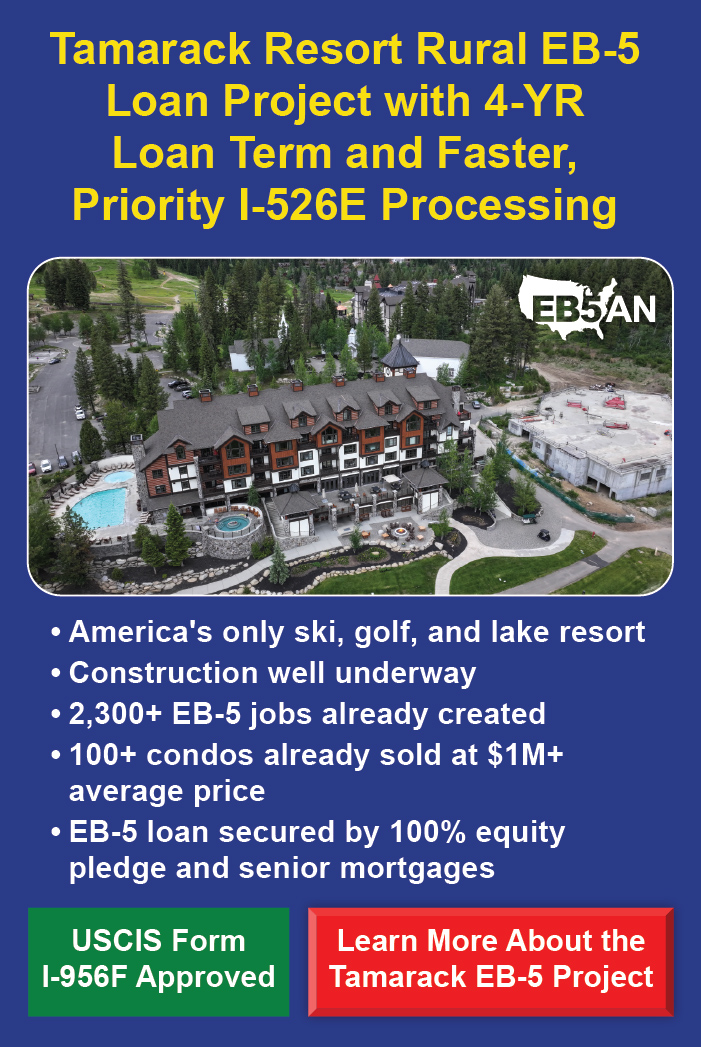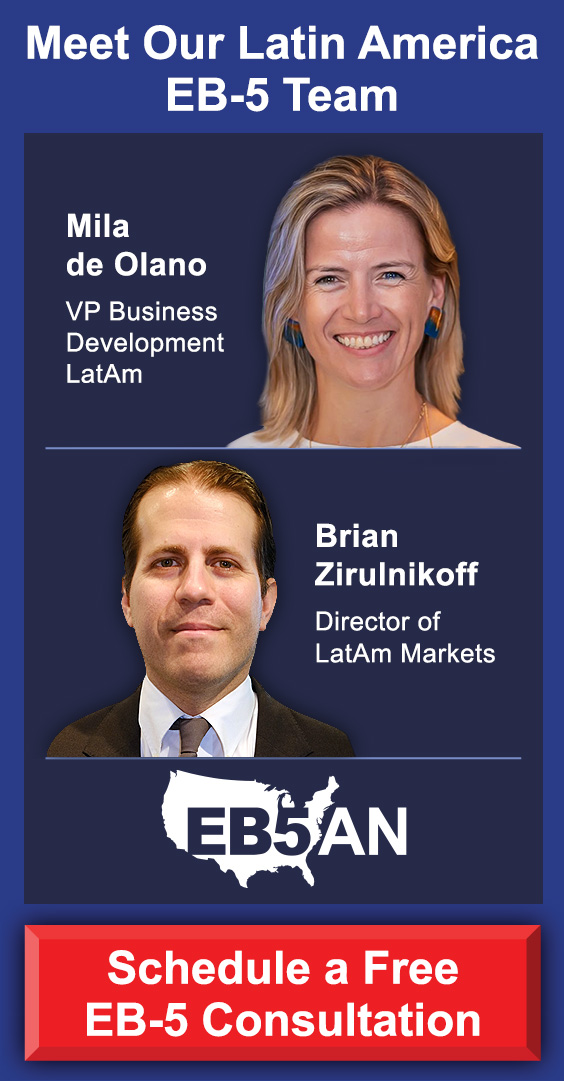Submitting Form I-526 or Form I-526E isn’t the first step to getting an EB-5 Green Card, but mailing it does mark the moment someone officially applies to the EB-5 Immigrant Investor Program.
The United States Citizenship and Immigration Services (USCIS) reviews this petition to determine whether an EB-5 visa applicant has made a valid investment and can receive a conditional two-year visa. The form is essential to getting a Green Card under the EB-5 program.
This article summarizes the steps you need to take to prepare and submit Form I-526/I-526E. It also provides best practice tips for gaining USCIS approval.
What to Do Before Submitting Form I-526/I-526E
- 1. Find an Immigration Attorney
- 2. Choose a New Commercial Enterprise and Investment Model
- 3. Understand the Capital Investment Requirement
- 4. Perform Due Diligence
What to Include With Form I-526/I-526E
Concurrent Filing of Form I-485
How to Submit Form I-526/I-526E
How Does Form I-526/I-526E Fit Into the EB-5 Process?
Get Help With Form I-526/I-526E
What to Do Before Submitting Form I-526/I-526E
1. Find an Immigration Attorney
Hiring an experienced immigration attorney is one of the most important things you should do before filing Form I-526/I-526E. The immigration process can be complex. An attorney will help you complete your forms correctly and handle any legal challenges that may arise.
2. Choose a New Commercial Enterprise and Investment Model
Next, you will need to invest in a new commercial enterprise (NCE). This is a lawful business that follows the requirements of the EB-5 program and creates jobs for U.S. workers. An NCE might be structured as a corporation, partnership, or limited liability company.
You can make this investment via one of two pathways: directly or via a USCIS-designated regional center.
Direct Investment
A direct investment requires the participant to be actively involved in managing the business, including the creation of its jobs. Direct investors have more control over the business’s operations. There are no intermediaries, and a direct project can accept no more than one investor. Direct investments tend to be for restaurants, schools, and other small- to moderate-sized enterprises.
If you decide to invest directly, you’ll submit Form I-526 (Immigrant Petition by Standalone Investor).
Regional Center Investment
A regional center investment requires fewer decisions and less involvement in the management of the project from the investor. Regional centers take on more of these responsibilities. The job creation criteria are also more lenient than is the case with a direct investment. Each regional center project can be funded by numerous investors. Such projects are often large real estate developments.
If you decide to invest via a regional center, you’ll submit Form I-526E (Immigrant Petition by Regional Center Investor).
3. Understand the Capital Investment Requirement
An EB-5 investor has to make a qualifying investment. The usual minimum investment amount for an EB-5 project is $1,050,000. A project located in a targeted employment area (TEA) or related to public infrastructure is eligible for a lower minimum investment of $800,000. These amounts are subject to change in 2027.
TEAs are eligible for this discounted amount because they are rural or have high unemployment rates. There is more need for economic growth and job creation in these areas.
A location qualifies as a rural TEA if it is outside a metropolitan statistical area and a city or town with a population above 20,000. High-unemployment TEAs have unemployment rates that are at least 150% of the U.S. national average.
4. Perform Due Diligence
Carrying out careful research on your planned investment opportunity is important. It is especially useful to find out more about the management team of each new commercial enterprise and regional center, including their track record with previous investors who filed the I-526 or I-526E petition.
Performing due diligence allows investors to lower risk. Below are some of the issues you’ll want to think about—ideally, in collaboration with your immigration attorney and an experienced EB-5 consulting firm—before making a sizable investment.
Immigration Risk
In the EB-5 investment industry, an applicant’s immigration risk represents their chances of obtaining a permanent U.S. Green Card.
A project’s compliance with USCIS regulations is crucial to an investor’s immigration success. The safest projects do not rely excessively on investment funding; instead, their capital structure is diversified, with much of the amount coming from the developer.
Does your planned project have a good chance of creating at least 10 full-time jobs for U.S. workers that last for at least two years? If the answer is no, it’s probably not a wise investment.
Financial Risk
An EB-5 applicant’s financial risk of losing their investment capital can be mitigated by investing in projects that are likely to succeed.
Once more, a balanced capital structure that does not depend solely on funding for completion is a good indicator that a project can return the investors’ capital.
Investors should also examine each project’s repayment strategy and timetable.
What to Include With Form I-526/I-526E
Your completed Form I-526/I-526E application needs to include certain types of evidence, as outlined below.
- Submit proof that the project is eligible for EB-5 funding and has received the investment. Evidence of this can include business agreements, financial reports, and articles of incorporation for direct investments, or Form I-956F for regional center investments.
- You’ll need proof that you invested the required capital of at least $800,000 for a TEA project or $1,050,000 for a non-TEA project. Documents that can prove this include bank statements, business records, and loan or mortgage certificates.
- Submit proof that your investment funds were obtained lawfully. Such lawful source evidence can come from bank statements, tax returns, salary or earnings documents, personal property sales records, or gifts from other parties. These documents should be detailed and thorough.
- Direct investors need proof that their investment is creating at least 10 full-time jobs (with each employee working for at least 35 hours per week) for U.S. workers. Positions filled by the investor and their family members don’t count. You can show that you’ll fulfill this requirement with a business plan (including details about how the NCE’s hiring plan will work and its fulfillment timeline) or an Economic Impact Analysis provided by another party.
- Direct investments require you to show proof that you’ll be involved in the active management of the business. Evidence to support this may include documentation that describes your management and policymaking duties, your voting records, or other papers indicating that you helped establish the NCE’s business policy.
- Submit a copy of your government-issued identification, such as a passport.
Concurrent Filing of Form I-485
Thanks to the EB-5 Reform and Integrity Act of 2022 (RIA), many investors can now save time with concurrent filing of Form I-526/I-526E and Form I-485. They no longer have to wait for USCIS approval of Form I-526/I-526E before submitting Form I-485 to adjust status.
Concurrent filing means that EB-5 investors can get access to the benefits of lawful permanent resident status—such as travel and work flexibility—while they wait to get their I-526/I-526Es approved. This also allows them to get their temporary Green Cards quicker.
To qualify for concurrent filing, you must already reside in the United States and you must have been born in a country that is not subject to visa retrogression. If not, you can proceed with your application through consular processing.
How to Submit Form I-526/I-526E
You should file your Form I-526/I-526E petition after your EB-5 investment is in escrow.
Most EB-5 applicants work with immigration attorneys to compile documents and fill out the paperwork. Note that the general filing fee is $11,160. A supplemental fee of $1,000 must also be included with Form I-526E, in accordance with the RIA.
Your attorney will usually submit Form I-526/I-526E to USCIS on your behalf. Regardless of who mails it, the form should go to the address below that matches your chosen mail carrier service.
USCIS Dallas Lockbox
U.S. Postal Service (USPS):
USCIS
Attn: I-526/E
P.O. Box 660168
Dallas, TX 75266-0168
FedEx, UPS, and DHL deliveries:
USCIS
Attn: I-526/E (Box 660168)
2501 S. State Highway 121 Business
Suite 400
Lewisville, TX 75067-8003
How Does Form I-526/I-526E Fit Into the EB-5 Process?
Depending on the visa category, USCIS may take years just to adjudicate an I-526 petition. Delays are especially likely if you’re from a high-demand country that faces a visa backlog and if you don’t invest in a rural TEA project that’s eligible for priority processing.
The key stages of the EB-5 process are as follows:
- Ensure a visa is available.
- Start the EB-5 investment process.
- File Forms I-526/I-526E and I-485 to get your conditional Green Card.
- Leave your capital invested in the project and at risk for at least two years.
- Send Form I-829 to USCIS during the last three months of the two-year conditional period.
- Await I-829 approval to receive unconditional Green Cards for yourself and qualified family members.
Get Help With Form I-526/I-526E
Getting your I-526 or I-526E immigration petition approved is a critical part of the EB-5 capital investment process.
That’s why you need help from trusted EB-5 industry professionals.
EB5AN has helped more than 2,300 families from 60 countries relocate to the United States as lawful permanent residents. Our expert team has more than a decade of experience, and offers clients first-rate, low-risk EB-5 regional center projects with a 100% USCIS project approval rate to date.
For questions about how you can become a Green Card holder through the EB-5 program, book a free call with us today.













